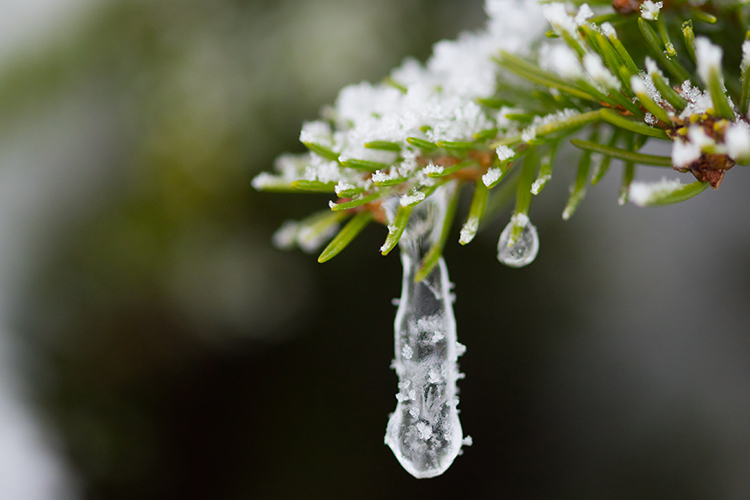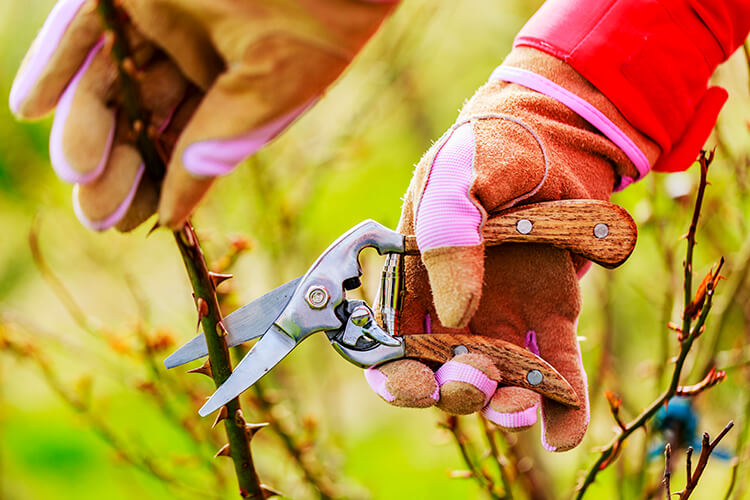
Protect Your Lawn, Garden, Trees, and Shrubs from Winter
In Southwestern Ontario, we’re generally finishing up putting our lawns and gardens to bed for the winter. While some do very little but cut back spent seed heads and dead foliage, others employ measures to cover and protect every tree, shrub, and plant on their property. An approach that falls somewhere in between is generally best to avoid plant and tree loss and ensure a healthy start the following spring. Here are some guidelines to help you ensure you’re adequately protecting your lawn and garden in the winter.
LAWN
Getting your lawn winter-ready takes very little effort. In fact, you may already be doing most of the items on this short checklist already.
Keep it short
Grass generally stops growing after day time highs remain below 10°C. Your final cut of the season should be between two and two and a half inches. Grass that’s too long may fall over through the winter, encouraging fungal growth. Grass that’s too short leaves it susceptible to stress due to the cold.
Keep it clean
Remove all furniture, toys, and debris (including any notable accumulation of leaves) from your lawn to avoid damage that results in bare patches come springtime.
Minimize traffic during transition
Dormant grass that doesn’t yet have a good layer of snow on it yet can be damaged quite easily when walked on. Try to stay off of grass during this transition.
Keep it insulated
A blanket of snow serves to insulate your lawn during the winter. Once the snow flies and starts to accumulate, keep your lawn blanketed all winter long.
PLANTS, TREES, AND SHRUBS
There are a few factors that determine your need to protect plants, trees, and shrubs during the winter:
Exposure to the elements
If a location is exposed to excess wind, snow melt, and/or ice, the vegetation in that area may break or even die before or by the time spring arrives. In addition, if relatively horizontal limbs are suddenly laden with heavy snow or ice, they might bend or even break as a result.
Exposure to road salt
Trees and shrubs that are close to roadways or are in the line of fire when snow is being displaced from roads, driveways, and walkways,
Your plant hardiness zone
Our region (Stratford and surrounding area) is generally classed as hardiness zone 5, so your garden should consist of plants and trees that thrive in this zone. If you’ve tried to push the limit with some of your selections (vegetation that’s appropriate for warmer hardiness zones), you’ll need to take special care to prepare them for winter in Southwestern Ontario.
How well-established the plants in question are
Well-established plants and trees have strong root systems that help sustain them through the cold winter months. On the other hand, those that have been newly planted or moved, particularly after the beginning of September, have not had sufficient opportunity to get established and so will require protection this winter.
HOW TO PROTECT YOUR PLANTS, SHRUBS, AND TREES
If your plants do need to be protected, there are three primary methods used, depending on the plants in questions and what you’re needing protection from.
Wrapping
Wrapping with burlap and twine can protect shrubs from salt spray, drying winds, and/or heavy snow and ice. You might opt to protect younger evergreens and shrubs from frost and heavy snow with a teepee instead, which can be made out of burlap and wood stakes or plywood.
Mulching
A 4 to 6-inch layer of mulch on vulnerable or newly established plants will protect them from the effects of repeated freezing and thawing which can plague our region this time of year.
Mounding
This is simply the act of piling soil up around the base of a plant, and is a great way to protect plants and bushes that are cut back at the end of every season. Mounding is commonly done with rose bushes and hydrangeas, as it protects them from exposure to prolonged cold, ensuring a healthy plant, come spring time.
If you haven’t taken measures to protect your garden yet, an early layer of snow may have you feeling like you’ve missed the boat. However, most vulnerable plants will still benefit greatly from protection, so it’s not too late. Regardless of how long winter is, you can still use the tips above to avoid plant loss and help guarantee a beautiful start to next year’s growing season.

